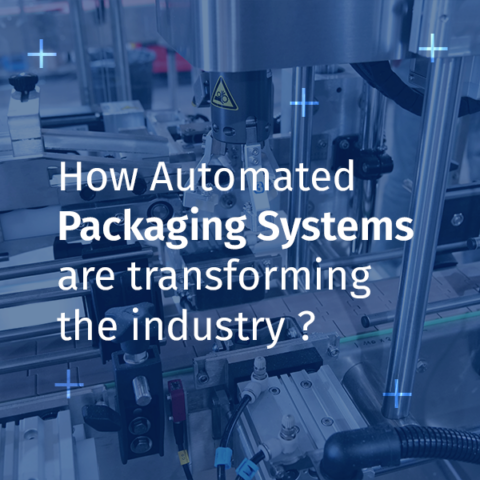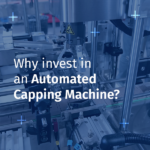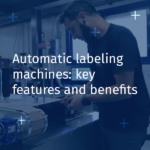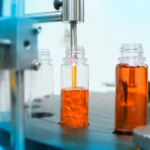Automated packaging systems have significantly revolutionized manufacturing and packaging processes, making them faster, more precise, and cost-effective. As the industry faces growing pressure to improve efficiency and meet stringent quality standards, adopting automated solutions has become essential to maintaining competitiveness. The global market for automated packaging systems is projected to reach $81.8 billion by 2027, growing at an annual rate of 9.1%. In the U.S., both small and large businesses are leveraging automation to streamline production, reduce labor costs, and ensure regulatory compliance.
In this article, we’ll explore how these systems function, their key benefits, and the ways they are transforming various industries. We’ll also discuss the challenges associated with implementing these systems and provide strategies to overcome them for a successful transition.
How Automated Packaging Systems Work
Automated packaging systems encompass multiple stages of the production process, from filling to capping, labeling, and final case packing. They are designed to operate seamlessly, integrating several steps into one continuous production line:
- Automated Filling: Machines such as the K-Line S are programmed to dispense the precise volume or weight into each container. They can handle liquids, solids, and semi-viscous products, ensuring consistent fills.
- Capping: After filling, caps are automatically sorted, positioned, and applied to bottles or containers. Capping systems ensure each cap is uniformly tightened or pressed for product integrity and safety.
- Labeling: Labeling is critical for both branding and regulatory compliance. Automatic labelers apply labels accurately, even at high speeds, ensuring that each product is correctly marked.
- Sealing and Final Packaging: Automated sealers secure product packaging, preventing damage during transit. The products are then packed into boxes or cases, ready for distribution.
By streamlining these steps, automated systems reduce manual intervention, minimize production time, and improve product consistency.
Key Benefits of Automated Packaging Systems
Automation offers substantial advantages for businesses of all sizes, from small startups to large-scale manufacturers:
1. Increased Production Speed
Automated machines operate at speeds far exceeding manual processes. For instance, an automatic labeler can apply labels at 200 to 400 bottles per minute, compared to just 30 to 60 units per minute manually. This increase in throughput allows companies to meet market demands faster and shorten lead times.
2. Lower Labor Costs and Reduced Human Error
Automation significantly lowers labor costs by reducing the number of manual workers needed for repetitive tasks such as filling, capping, and labeling. The Association for Packaging and Processing Technologies (PMMI) reports that companies automating their production lines can cut labor costs by 20% to 30%.
3. Enhanced Product Consistency and Quality
Automated systems ensure that every product is handled the same way, eliminating variations due to human error or fatigue. Whether it’s precise dosing or consistent torque during capping, automation helps maintain product quality throughout the production process.
4. Waste Reduction
Errors like overfilling, loose caps, or misaligned labels can lead to product waste and rejected batches. Automated machines are equipped with real-time detection and correction systems, minimizing these issues and saving costs associated with material loss.
Case Study: How Automation Transformed a Cosmetic Manufacturer
A California-based cosmetic company faced frequent filling and labeling errors, leading to inconsistent product quality and high waste. By investing in a fully automated packaging line, including filling, capping, and labeling systems, the company saw a 40% increase in monthly output. Packaging errors dropped from 15% to less than 2%, achieving a return on investment in under two years through reduced labor costs and improved product quality.
Challenges of Implementing Automated Systems
Despite the numerous benefits, implementing automated packaging systems comes with its own set of challenges:
1. High Initial Investment
The upfront cost of acquiring and installing automated systems can be significant, especially for small businesses. However, these costs are typically offset by long-term savings in labor, waste reduction, and increased production capacity.
2. Need for Employee Training
Successful integration of automation requires training personnel on machine operation and maintenance. Without adequate training, frequent downtime and underutilization of equipment capabilities may occur.
3. Compatibility with Existing Systems
Existing production lines may not be compatible with new automated systems, necessitating costly adjustments or upgrades. A well-thought-out integration plan is crucial to ensuring a smooth transition.
Conclusion: The Future of Packaging Automation
The future of packaging lies in increasingly intelligent systems that leverage artificial intelligence and the Internet of Things (IoT) to optimize real-time production. For businesses of all sizes, investing in automation is no longer optional but a necessity to stay competitive.
CDA USA offers a complete range of automated packaging solutions tailored to the unique needs of various industries. Contact our team today to learn more about how our systems can help your business harness the power of automation to transform your production line.







